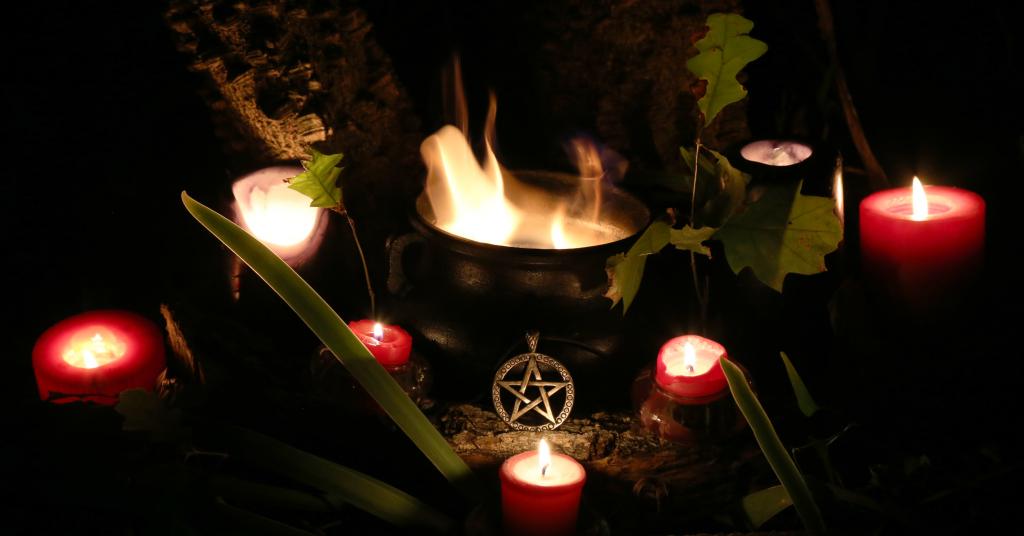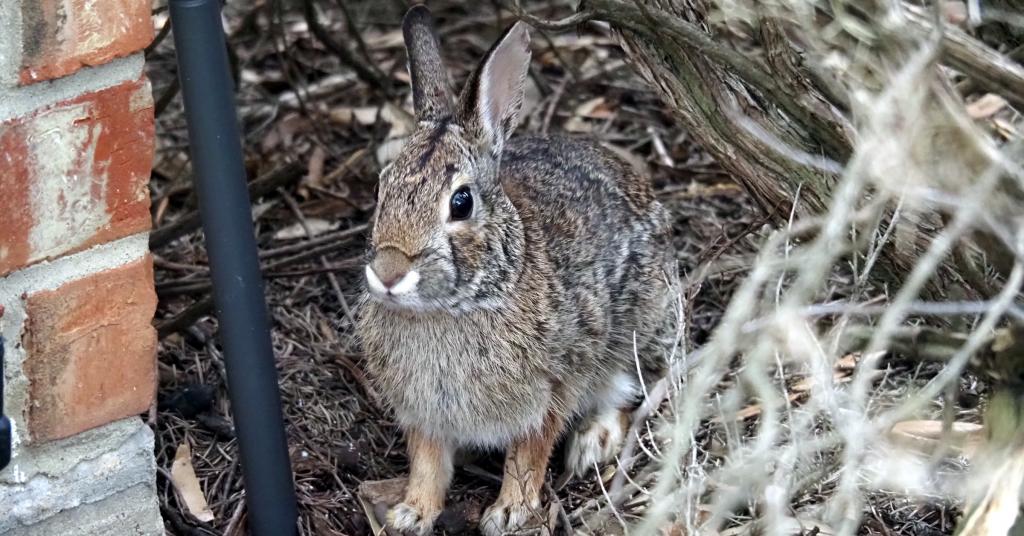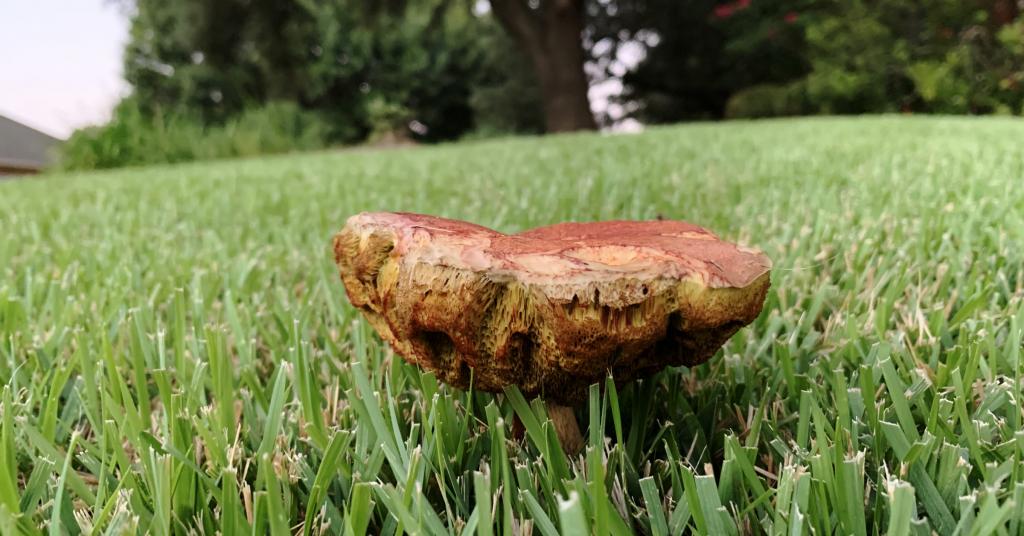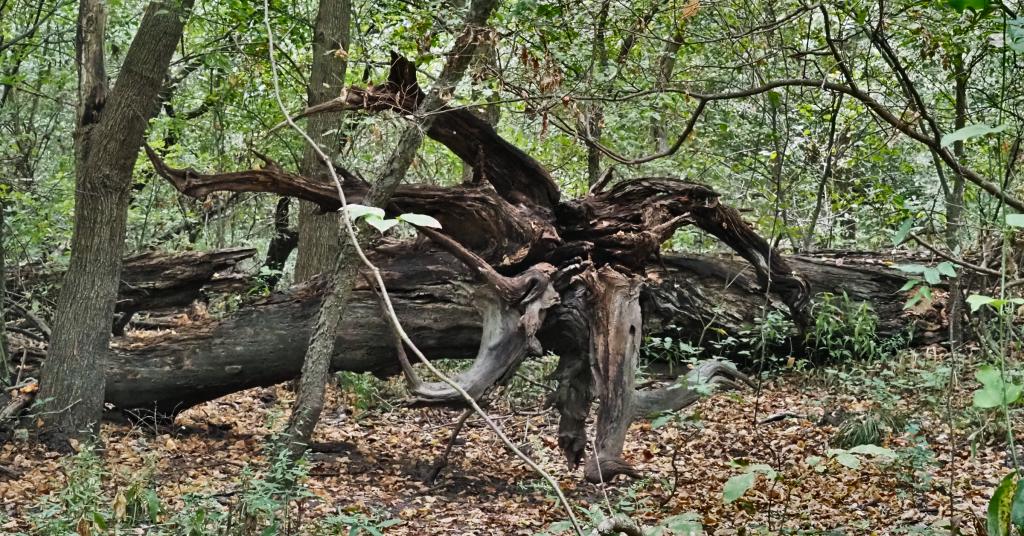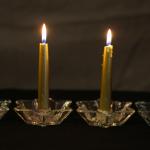It’s October, when the mainstream media remembers that witches are real and tries to figure out how to use them to attract viewers and readers.
Here’s a piece from ABC (that’s the Australian Broadcasting Corporation) that starts out “the word witch is a powerful thing.” It talks about the “growing number of young people who are getting into witchcraft through social media.” It features candles, crystals, and of course, attractive young women. It discusses the feminist connections to the modern witchcraft movement. And it ends with this quote:
Witches, wizards, they’re just people who are connected to themselves. And they’re connected to nature. And they work with plants. And they’re healers. And that’s like, really what it is at its core.
This is where I need to remind everyone that I do not consider myself a witch, and therefore I do not speak for all witches, or really for any witches. But what goes on under the banner of witchcraft impacts all of us in the Big Tent of Paganism. And just as I came into all this through Wicca but found my way to Druidry and polytheism, others will come in through witchcraft and end up in other parts of the movement.
My practice is very witchcraft adjacent. What I do – particularly in the area of magic – is virtually indistinguishable from witchcraft. So when someone says that “witches are just people who are connected to themselves” that affects me far more than, say, Evangelicals and Progressives arguing about who are “the real Christians.”
I’m less than happy with the ABC piece – and with the dozens of near-identical pieces that will run between now and Halloween (though this one is better than many). I wish the media remembered that witches and Pagans are real people who practice our witchcraft and Paganism the other 11 months of the year too.
But I’m not really interested in rebutting this piece, and I have no desire to critique the witches interviewed for it. I just want to ask one question:
What kind of witch do you want to be?
An empowerment witch
In most places throughout most of history, a witch was something that was dangerous to be – or to have your neighbors think you might be. During the medieval witch hunts, thousands and thousands of people – mostly women – were tortured and killed because people believed they were harming them with magic, or consorting with the Christian devil, or both. Witch killings still happen today in some parts of the world.
That makes the archetype of the witch a very powerful thing.
And so many young women – and others – embrace that archetype and in doing so, they empower themselves to do the difficult and scary things they need to do to navigate an unjust and dangerous world.
Let me be absolutely clear: this is a good thing.
I wish the media understood that this isn’t just a thing for young women. It’s also for older women, middle aged women, and men. And non-binary people. I have no statistics, but I see what strikes me as a disproportionate number of non-binary people in witchcraft. I would love it if one of my non-binary witch friends would give their take on this.
If your witchcraft is all about personal empowerment and political activism and you see magic strictly as a psychological phenomena, you’re a witch as far as I’m concerned.
But that’s not the only kind of witch there is.
An aesthetic witch
Aesthetic witches are those who never cast the first spell but who love black clothes, pointy hats, crystals, and all the elements of the style of witchcraft. There’s a lot of overlap between empowerment witches and aesthetic witches – they tend to be motivated by similar forces. But aesthetic witches mainly want to look good.
We had quite the debate about this a few years ago. The Aesthetic of Witchcraft and the Return of Real Magic was my 3rd most popular post of all of 2017. A lot of witches were offended that people – again, mostly young women – whose “basic witch” outfits cost a small fortune were claiming titles they had worked, studied, and in some cases, bled to earn.
I get that. And I wish the media would run some pictures of witches wearing something other than black dresses and cloaks. At the same time, nobody owns witchcraft, the publicity is good, and if dressing like a witch (or rather, dressing in a fashion traditionally associated with witchcraft) makes someone feel good, that’s a good thing.
But that’s not the only way to be a witch.
A Nature witch
“And they’re connected to nature. And they work with plants.”
Are they describing witches or botanists?
Another part of the archetype is the idea of a witch living in a cottage deep in the forest, always with dirt under their fingernails, harvesting herbs for potions, perhaps befriending the local animals – and perhaps using their parts in more nefarious spells.
As much as I like technology and modern conveniences, there are days when that witch’s cottage looks awfully attractive.
One of the early drivers of the Modern Pagan movement was a desire to reconnect with Nature, to re-establish the relationships humanity had for tens of thousands of years before civilization and industrial society severed us from them. A reverence for Nature is a major part of my Paganism and my Druidry, and I see the witches who do similar things in similar ways as kindred spirits.
If you’re a “dirt witch” you’re very much a witch.
But that’s not the only kind of witch there is.
A Wiccan witch
Witchcraft can be practiced in the context of any religion. But Gerald Gardner’s creation (or re-creation, depending on how you interpret his stories) of a religion of witchcraft is its own separate tradition. Historian Ronald Hutton said “Wicca is the only religion England has ever given to the world.”
Gardnerian Wicca and Alexandrian Wicca are practiced in covens, and person-to-person teaching and initiation is a requirement. But the spread of Wicca in the last quarter of the 20th century was largely due to books, and today there are far more solitary practitioners than coven-based Wiccans.
This post by Jason Mankey addresses the boundaries of Wicca and some of the recent controversies around them. Jason says “I believe that Wicca is first and foremost a magickal religion.” But acknowledging the wide variation in Wiccan practice, he also admits “but that’s just me.”
As the saying goes “all Wiccans are witches but not all witches are Wiccans.”
There are many different kinds of witches.
A magical witch
The most disappointing part of the ABC article was the line near the end that said “she encourages people to look beyond all the ‘woo woo’ stuff, because she believes witchcraft is so much more than that.”
That line is why I wrote this post. For me, magic – the “woo woo stuff” – is the core of witchcraft.
I like Peter Grey’s definition of witchcraft: “the recourse of the dispossessed, the powerless, the hungry and the abused.” Witchcraft is where you turn when the rich abuse the poor, when the powerful abuse the vulnerable, and when politics fails to deliver on its promise of liberty and justice for all.
As a child, I wanted to be a witch. I lived in a stable, supportive family, but I was powerless – and I hated it. I wanted to be able to do the things legendary witches could do.
It would be many years before I learned the truth behind the legends, and while I can’t do what fictional witches can do, there is magic that I can do. Magic doesn’t make things happen, but it improves the odds that they will happen. And sometimes, improving the odds makes all the difference in the world.
Yes, magic can involve crystals and herbs and candles – I use a lot of candles. It can also involve blood and urine and graveyard dirt. It can be powered with chanting and dancing, and it can be powered with offerings to spirits… including the kind of spirits that hang out at crossroads. It can be done with the purest of intentions, and it can be done for the most spiteful revenge.
For all that Nature is beautiful and life-giving, Nature is also terrible and life-taking. Nature has teeth.
Witchcraft reminds us that we have teeth too.
My hope is that at least some of the people who come into witchcraft for the empowerment, for the aesthetics, for Nature, or for Wicca will stick around and learn some magic.
The kind of magic that has always made people afraid of witches.
Choose all that apply
Google “types of witches” and you’ll find sites that say there are 6, 10, 25, and 45 different types of witches. The five kinds of witches I’ve listed here are far from the only ways to describe and categorize witches and witchcraft. Most witches fall into multiple categories.
If I decided to call myself a witch (and I gave serious consideration to it at the end of last year, but that’s another story for another time, and probably one best told over a cup of tea or a dram of whisky) I would fit into all of these categories except Wiccan. So would most witches I know.
The point is that where ever you come into witchcraft, there’s always more you can add to it.
The word witch is a powerful thing.
It means different things to different people. For some it means magic user.
What kind of witch do you want to be?


